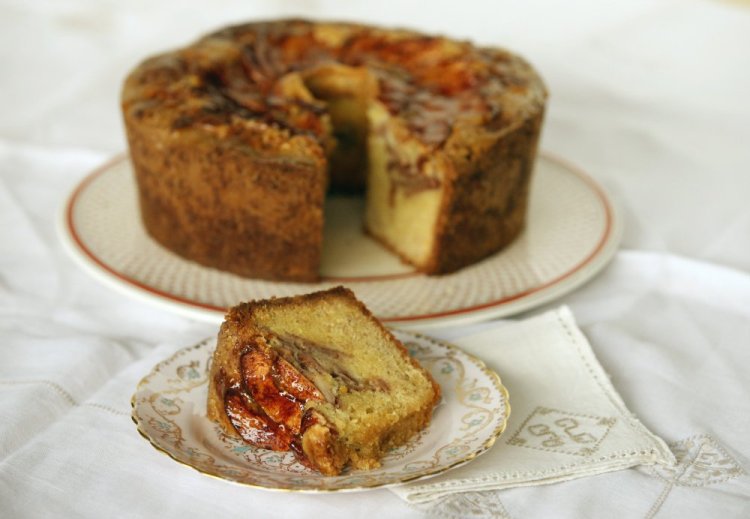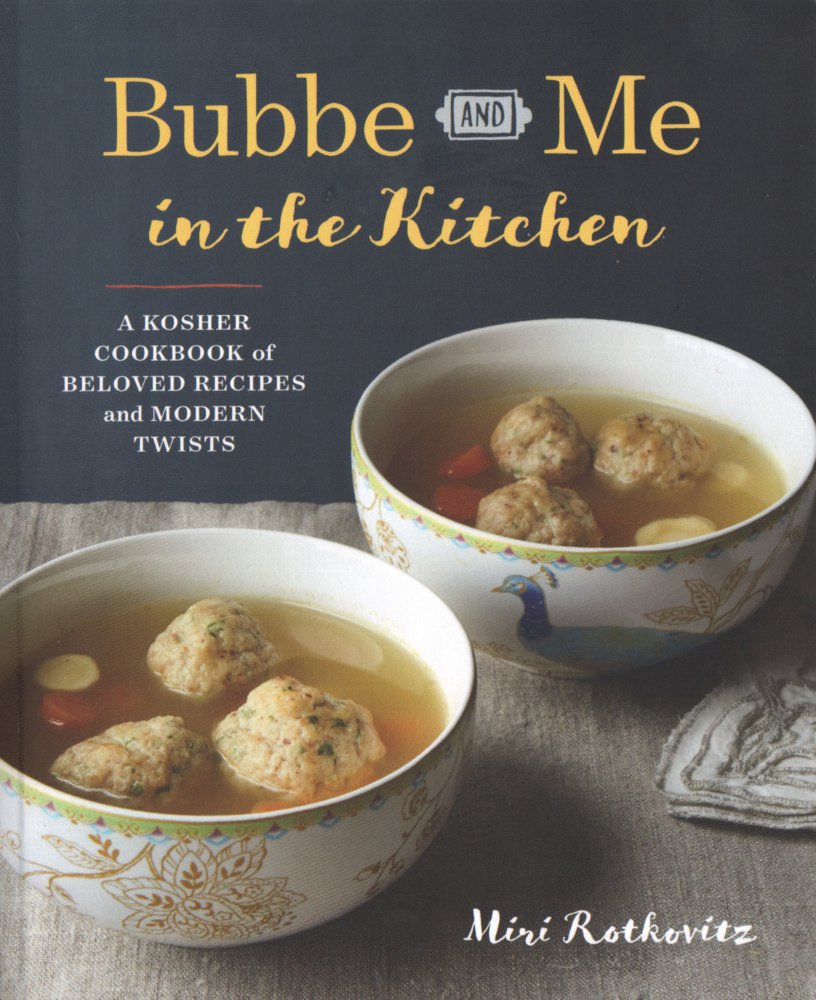“Bubbe and Me in the Kitchen” by
Although I am Jewish, I did not call my grandmothers Bubbe (Yiddish for grandmother). One was Nana, the other Nanny. I grew up in the age of assimilation.
And as far as I can remember, I never cooked alongside either of them. Nanny – long gone or I would not write what I’m about to write – was a terrible cook. What I remember of Sunday meals at her home was watery, undersalted chicken soup; canned peas boiled to mush; and beige, saggy-skinned chicken.
Nana also died long ago, and frankly, I can’t ever recall ever seeing her cook. Perhaps because she lived in Montreal all of her 91 years, where the shops are crammed with delicious delicacies, she didn’t bother. She was, however, a terrific hostess, and my mother, then me inherited her love of entertaining.
“Bubbe and Me in the Kitchen: A Kosher Cookbook of Beloved Recipes and Modern Twists,” a new book (Sonoma Press, 2016, $16.99) by Miri Rotkovitz, is very far from my own experience. Lucky Rotkovitz to have grown up with a grandmother who “introduced me to new foods, shared wisdom about the ingredients she loved, and let me ‘help,’ even when mess-making was my forte,” as she writes in the introduction.
Some time ago, Miri and I worked together for several years at the James Beard Foundation in New York, so for me this book is a double embrace: a chance to visit with a bevy of Jewish grandmothers – she interviews other Jewish food professionals about their grandmothers’ cooking and weaves their tales into the book – as well as a chance to catch up with Miri, now a mother herself.
Since I have no family recipe for apple cake passed down through the generations, I am borrowing hers for the High Holy Days, the period of time from the Jewish New Year to the Day of Atonement, this year Oct. 2-12.
The recipe makes a gigantic cake, which made the house smell marvelous while it baked (and baked and baked; it took almost two hours in the oven). It’s moist and quite sweet, appropriate as apples are eaten at Rosh Hashanah to express hope for a sweet new year.
SAVTA’S SEMI-FAMOUS JEWISH APPLE CAKE
From “Bubbe and Me in the Kitchen.” Rotkovitz suggests using sweet-tart multipurpose apples like Gala, Fuji, Lady Alice, Cameo or Granny Smith. Plan ahead: cutting and layering all those apples takes time. The cake is pareve, meaning those who keep kosher can eat it with either milk or meat meals. Food Editor Peggy Grodinsky glazed the cake top lightly with warm marmalade. Savta, by the way, means grandmother in Hebrew.
Serves 10-12
6 small apples, peeled, cored and thinly sliced
3 tablespoons sugar
1 tablespoon cinnamon
3 cups all-purpose flour, plus extra for dusting
2½ cups sugar
1 tablespoon baking powder
½ teaspoon salt
1 cup expeller-pressed canola, grapeseed or walnut oil, plus extra for greasing
4 large eggs
⅓ cup orange juice
1 tablespoon pure vanilla extract
Preheat the oven to 350 degrees F. (If you are using a dark or nonstick pan, preheat to 325 degrees F to prevent burning.) Grease and lightly flour a large tube pan with a removable bottom. Tap out any excess flour and set aside.
In a large bowl, combine the sliced apples, sugar and cinnamon. Gently toss to coat and set aside.
In another large bowl, whisk together the flour, sugar, baking powder and salt. Using an electric mixer or a large wooden spoon, beat in the oil, eggs, orange juice and vanilla, mixing just until the batter is smooth and thick.
Spoon about 1/3 of the batter into the prepared tube pan, then spread with a spatula to cover the bottom of the pan. With clean hands, arrange about 1/3 of the apple slices in an even layer over the batter, taking are to keep the apples from touching the walls of the pan. (This prevents sticking and makes it easier to unmold the cake.)
Spoon and spread a little less than half of the remaining batter over the apples. Don’t worry if the batter doesn’t quite cover the fruit, or moves some of the apples around. Top with about half of the remaining apples, reserving the most attractive slices for the final layer. Spoon the remaining batter over the second layer of apples, spreading with the spatula to cover them evenly.
Decorate the top of the cake with the reserved apple slices, arranging them in slightly overlapping concentric circles – they will spread out during baking. If there’s any syrupy cinnamon-sugar liquid left in the apple bowl, drizzle a little of it over the cake.
Place the cake pan on a rimmed baking sheet or on top of a piece of foil to catch drips. Bake on the center rack of the preheated oven for 1 1/2 to 2 hours, or until a cake tester comes out clean and the top of the cake is golden and crusty in spots. Test at the 1 1/2 hour mark. If the cake isn’t ready, test at 15-minute intervals until the tester comes out clean.
Remove the cake from the oven and allow it to cool in its pan on a wire rack. When it’s completely cool, run an offset spatula or knife around the edge of the pan, then remove the outside of the cake pan. Next, run the spatula or knife between the underside of the cake and the pan bottom to loosen.
Over a plate, carefully invert the cake and slide it off of the tube and pan bottom. Place a serving plate face down on the cake. Hold both plates and flip, so the cake is now resting apple-side up on the serving plate.
Copy the Story LinkSend questions/comments to the editors.





Success. Please wait for the page to reload. If the page does not reload within 5 seconds, please refresh the page.
Enter your email and password to access comments.
Hi, to comment on stories you must . This profile is in addition to your subscription and website login.
Already have a commenting profile? .
Invalid username/password.
Please check your email to confirm and complete your registration.
Only subscribers are eligible to post comments. Please subscribe or login first for digital access. Here’s why.
Use the form below to reset your password. When you've submitted your account email, we will send an email with a reset code.